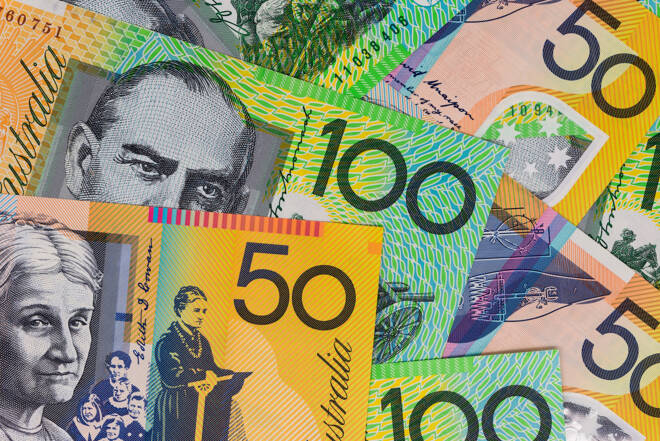Advertisement
Advertisement
AUD to USD Forecast: Australian Business Confidence Recovered in December
By:
After better-than-expected business confidence numbers from Australia, the US economic calendar could influence bets on a March Fed rate cut.
Highlights
- The AUD/USD declined by 0.39% on Monday, ending the session at $0.65696.
- On Tuesday, Australian business confidence figures drew investor interest early in the session.
- Stimulus chatter from Beijing and the US economic calendar also warrant investor attention.
Monday Overview of the AUD/USD
The AUD/USD declined by 0.39% on Monday. Reversing a 0.34% loss from Friday, the Australian dollar ended the session at $0.65696. The Australian dollar rose to a high of $0.66137 before falling to a low of $0.65662.
Australian Business Confidence Improved in December
On Tuesday, Australian business confidence was in focus. The NAB Business Confidence Index increased from -9 to -1 in December. Economists forecast the Index to rise to -7.
A pickup in business confidence could signal an improving macroeconomic environment. Significantly, a pickup in economic activity could fuel business investment and job creation.
An improving labor market could support wage growth and disposable income. Upward trends in disposable income could fuel consumer spending. Private consumption contributes over 50% to the Australian economy.
Away from the economic calendar, investors must also monitor for stimulus chatter from Beijing.
US Economic Calendar: Richmond Private Sector Indexes in Focus
On Tuesday, Richmond Fed private sector indexes will garner investor interest. Waning private sector activity could refuel bets on a March Fed rate cut. Investors could consider the Richmond Fed numbers as leading indicators to the US private sector PMIs out on Wednesday.
The service sector data is likely to have more influence. The services sector accounts for over 70% of the US economy.
Economists forecast the Richmond Fed Manufacturing Index to fall from -11 to -15 in January. Significantly, economists predict the Richmond Fed Services PMI to decline from 0 to -5.
There are no Fed speakers to influence the AUD/USD pair. The Fed entered the Blackout period on January 21.
Short-Term Forecast
Near-term AUD/USD trends hinge on US service sector PMIs, US inflation, and China stimulus plans. A pickup in US service sector activity and sticky US inflation could tilt monetary policy divergence toward the US dollar.
AUD/USD Price Action
Daily Chart
The AUD/USD hovered below the 50-day and 200-day EMAs, sending bearish price signals.
An AUD/USD break above the 200-day EMA would give the bulls a run at the $0.66162 resistance level and the 50-day EMA. A breakout from the 50-day EMA would bring the $0.66500 handle into view.
On Tuesday, Australian business confidence, China, and the US economic calendar need consideration.
However, a drop below the $0.65500 handle would give the bears a run at the $0.64900 support level and trend line.
A 14-period Daily RSI reading of 37.95 indicates an AUD/USD fall through the $0.65 handle before entering oversold territory.
4-Hourly Chart
The AUD/USD remained below the 50-day and 200-day EMAs, affirming the bearish price signals.
An AUD/USD break above the 50-day EMA and the $0.66162 resistance level would give the bulls a run at the 200-day EMA. Selling pressure could intensify at $0.66150. The 50-day EMA is confluent with the $0.66162 resistance level.
However, a fall through the $0.65500 handle would bring the $0.64900 support level and the trend line into play.
The 14-period 4-Hourly RSI at 42.12 indicates an AUD/USD fall through the $0.65 handle before entering oversold territory.
About the Author
Bob Masonauthor
With over 28 years of experience in the financial industry, Bob has worked with various global rating agencies and multinational banks. Currently he is covering currencies, commodities, alternative asset classes and global equities, focusing mostly on European and Asian markets.
Advertisement
